
Valentin Aleksandrovich Serov Giclée Fine Art Prints 1 of 2
1865-1911
Russian Realist Painter
Valentin Aleksandrovich Serov (1865-1911) occupies a distinct position in Russian art, bridging the late-19th and early-20th centuries with works that reflect both fidelity to 19th-century realism and a clear anticipation of the more experimental directions that would follow. His biography illustrates an artist deeply engaged with the traditions of the past yet determined to innovate in the face of emerging modernist currents.
Born into a creative family, Serov was introduced to the arts almost from infancy. His father, composer and music critic Alexander Serov, and his mother, a gifted pianist, hosted gatherings where artists, musicians, and literary figures mingled. Within this environment, Serov developed an early sensitivity to shape, line, and composition, qualities that would be finely honed in his later career. By age nine, he was studying with the painter Ilya Repin, working alongside one of the era’s most esteemed realist masters, a formative experience that sharpened his eye for natural details and expressive brushwork.
Serov’s decision to join the Imperial Academy of Fine Arts in 1880 was equally significant. Although he had to wait until he was of the mandated age for formal admission, his talent was recognized early by Professor Pavel Chistyakov. Immersed in academic principles, Serov nonetheless chafed under the more rigid methods that shaped many of his peers. Over time, he reconciled the Academy’s emphasis on structure and faithful representation with the liberal fluidity he absorbed from Repin’s studio sessions. This blend of influences provided the bedrock for his stylistic trajectory, as he moved nimbly between painterly realism and an evolving interest in more interpretive methods of portrayal.
The artist’s deepening friendship with the Mamontov family brought him to their Abramtsevo estate, a place of respite for many notable Russian creatives. Here, Serov was part of a vibrant circle that included Vasily Polenov and Mikhail Vrubel, collaborators in theatre and decorative projects. The camaraderie at Abramtsevo kindled Serov’s lifelong fascination with performance and theatrical design, yet it also shaped his sense of landscape. His early open-air studies documented everyday scenes with remarkable sensitivity, depicting stables and simple villages that revealed a quieter side of Russia’s countryside.
Portraiture, however, became the defining domain of Serov’s art. Even in his youth, he revealed an acute ability to capture the psychological substance of his subjects. Early portraits of Tatyana Mamontova and Maria Simonovich show a particular softness of pencil shading and an almost painterly approach to line. Over time, he refined these qualities further, experimenting with livelier and more searching techniques. He believed that each new portrait required a fresh solution, a different lens through which to interpret his sitter’s essence. Such determination is evident in his watercolors of female sitters from the 1890s, where he used a sparse palette yet retained a keen eye for character.
Despite success and increasing commissions, Serov always resisted the mechanical aspects of portrait work. He did not wish to turn his studio into a conveyor belt for fashionable likenesses, preferring instead to probe deeper for the vital personality of each sitter. He gained a reputation for perceptive character studies—so perceptive, in fact, that they could, on occasion, prove unflattering. Yet it was precisely this commitment to truthful expression that intrigued many patrons and secured his place among the era’s leading portraitists.
In 1899, Serov joined the board of the Tretyakov Gallery, an institution that would later house the most comprehensive body of his work. During his lifetime, he refrained from letting the gallery acquire many of his pieces, wary of potential conflicts of interest. Nevertheless, the museum eventually amassed a vast collection, especially after his death, obtaining important drawings, watercolors, and sketches that reveal the multifaceted nature of his artistry. As an heir to the realist tradition, Serov demonstrated a thorough grounding in representational skill, but he also absorbed new ideas, anticipating the directions of 20th-century painting in his experiments with line and form.
His attachment to the theatre ran parallel to his developments in portrait and landscape. From set designs for private productions to more ambitious collaborations at the Mariinsky Theatre, Serov’s theatrical ventures captured his eagerness to merge pictorial integrity with performance. His few large-scale commissions—such as designing sets for Alexander Serov’s opera "Judith"—were informed by the same refined attention he applied to the human figure. He insisted on a “noble” quality to scenic design, a term he used to describe the fundamental dignity he believed underpinned great art.
The early 1900s saw Serov venturing into historical themes, focusing on the figures of Peter the Great and Catherine II. He studied archival costumes, architectural details, and even the death mask of Peter I to construct portrayals that combined accurate historical references with vivid, naturalistic characterizations. His fascination with the brisk, relentless energy of Peter the Great formed the basis of several compositions, each seeking to capture the Tsar’s imposing authority while preserving a raw humanity.
Serov’s interest in mythology and antiquity, sparked by travels to Greece, likewise culminated in large-scale paintings intended to bridge classical subject matter and modern aesthetics. Works such as "The Rape of Europa" and "Odysseus and Nausicaa" explored ancient narratives in a manner that integrated decorative forms with a lifelike sense of movement, reflecting his conviction that even mythic tales ought to manifest true physicality. He spent considerable time searching for the right models, whether humans or animals, always aiming to align exact observation with imaginative composition.
By the time of his untimely death in 1911, Serov’s standing in the Russian art world was considerable. He had contributed to a shift in pictorial language, linking the traditions of the 19th century with a daring, forward-thinking approach that would echo in the works of subsequent generations. Throughout, he remained dedicated to precision, dynamism, and truthfulness, qualities that established his enduring legacy among Russia’s most notable painters and graphic artists.
In studying Serov’s biography, one observes a life and career attuned to innovation yet grounded in an appreciation of the established canon. From his earliest pencil portraits to the ambitious, sometimes unfinished paintings of his final years, he manifested an unceasing quest to refine and expand his visual vocabulary. That unwavering devotion to craft and thought, woven through every project he undertook, continues to place him among the transformative figures in Russian art’s remarkable transition into modernity.
Born into a creative family, Serov was introduced to the arts almost from infancy. His father, composer and music critic Alexander Serov, and his mother, a gifted pianist, hosted gatherings where artists, musicians, and literary figures mingled. Within this environment, Serov developed an early sensitivity to shape, line, and composition, qualities that would be finely honed in his later career. By age nine, he was studying with the painter Ilya Repin, working alongside one of the era’s most esteemed realist masters, a formative experience that sharpened his eye for natural details and expressive brushwork.
Serov’s decision to join the Imperial Academy of Fine Arts in 1880 was equally significant. Although he had to wait until he was of the mandated age for formal admission, his talent was recognized early by Professor Pavel Chistyakov. Immersed in academic principles, Serov nonetheless chafed under the more rigid methods that shaped many of his peers. Over time, he reconciled the Academy’s emphasis on structure and faithful representation with the liberal fluidity he absorbed from Repin’s studio sessions. This blend of influences provided the bedrock for his stylistic trajectory, as he moved nimbly between painterly realism and an evolving interest in more interpretive methods of portrayal.
The artist’s deepening friendship with the Mamontov family brought him to their Abramtsevo estate, a place of respite for many notable Russian creatives. Here, Serov was part of a vibrant circle that included Vasily Polenov and Mikhail Vrubel, collaborators in theatre and decorative projects. The camaraderie at Abramtsevo kindled Serov’s lifelong fascination with performance and theatrical design, yet it also shaped his sense of landscape. His early open-air studies documented everyday scenes with remarkable sensitivity, depicting stables and simple villages that revealed a quieter side of Russia’s countryside.
Portraiture, however, became the defining domain of Serov’s art. Even in his youth, he revealed an acute ability to capture the psychological substance of his subjects. Early portraits of Tatyana Mamontova and Maria Simonovich show a particular softness of pencil shading and an almost painterly approach to line. Over time, he refined these qualities further, experimenting with livelier and more searching techniques. He believed that each new portrait required a fresh solution, a different lens through which to interpret his sitter’s essence. Such determination is evident in his watercolors of female sitters from the 1890s, where he used a sparse palette yet retained a keen eye for character.
Despite success and increasing commissions, Serov always resisted the mechanical aspects of portrait work. He did not wish to turn his studio into a conveyor belt for fashionable likenesses, preferring instead to probe deeper for the vital personality of each sitter. He gained a reputation for perceptive character studies—so perceptive, in fact, that they could, on occasion, prove unflattering. Yet it was precisely this commitment to truthful expression that intrigued many patrons and secured his place among the era’s leading portraitists.
In 1899, Serov joined the board of the Tretyakov Gallery, an institution that would later house the most comprehensive body of his work. During his lifetime, he refrained from letting the gallery acquire many of his pieces, wary of potential conflicts of interest. Nevertheless, the museum eventually amassed a vast collection, especially after his death, obtaining important drawings, watercolors, and sketches that reveal the multifaceted nature of his artistry. As an heir to the realist tradition, Serov demonstrated a thorough grounding in representational skill, but he also absorbed new ideas, anticipating the directions of 20th-century painting in his experiments with line and form.
His attachment to the theatre ran parallel to his developments in portrait and landscape. From set designs for private productions to more ambitious collaborations at the Mariinsky Theatre, Serov’s theatrical ventures captured his eagerness to merge pictorial integrity with performance. His few large-scale commissions—such as designing sets for Alexander Serov’s opera "Judith"—were informed by the same refined attention he applied to the human figure. He insisted on a “noble” quality to scenic design, a term he used to describe the fundamental dignity he believed underpinned great art.
The early 1900s saw Serov venturing into historical themes, focusing on the figures of Peter the Great and Catherine II. He studied archival costumes, architectural details, and even the death mask of Peter I to construct portrayals that combined accurate historical references with vivid, naturalistic characterizations. His fascination with the brisk, relentless energy of Peter the Great formed the basis of several compositions, each seeking to capture the Tsar’s imposing authority while preserving a raw humanity.
Serov’s interest in mythology and antiquity, sparked by travels to Greece, likewise culminated in large-scale paintings intended to bridge classical subject matter and modern aesthetics. Works such as "The Rape of Europa" and "Odysseus and Nausicaa" explored ancient narratives in a manner that integrated decorative forms with a lifelike sense of movement, reflecting his conviction that even mythic tales ought to manifest true physicality. He spent considerable time searching for the right models, whether humans or animals, always aiming to align exact observation with imaginative composition.
By the time of his untimely death in 1911, Serov’s standing in the Russian art world was considerable. He had contributed to a shift in pictorial language, linking the traditions of the 19th century with a daring, forward-thinking approach that would echo in the works of subsequent generations. Throughout, he remained dedicated to precision, dynamism, and truthfulness, qualities that established his enduring legacy among Russia’s most notable painters and graphic artists.
In studying Serov’s biography, one observes a life and career attuned to innovation yet grounded in an appreciation of the established canon. From his earliest pencil portraits to the ambitious, sometimes unfinished paintings of his final years, he manifested an unceasing quest to refine and expand his visual vocabulary. That unwavering devotion to craft and thought, woven through every project he undertook, continues to place him among the transformative figures in Russian art’s remarkable transition into modernity.
29 Valentin Serov Artworks
Page 1 of 2
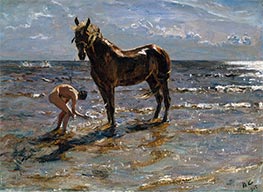
Giclée Canvas Print
$68.57
$68.57
SKU: 3094-SVA
Valentin Aleksandrovich Serov
Original Size:72 x 99 cm
State Russian Museum, St. Petersburg, Russia
Valentin Aleksandrovich Serov
Original Size:72 x 99 cm
State Russian Museum, St. Petersburg, Russia
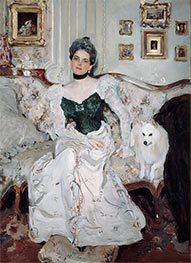
Giclée Canvas Print
$68.05
$68.05
SKU: 3090-SVA
Valentin Aleksandrovich Serov
Original Size:181.5 x 133 cm
State Russian Museum, St. Petersburg, Russia
Valentin Aleksandrovich Serov
Original Size:181.5 x 133 cm
State Russian Museum, St. Petersburg, Russia
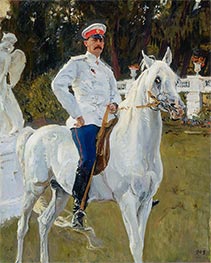
Giclée Canvas Print
$75.58
$75.58
SKU: 3103-SVA
Valentin Aleksandrovich Serov
Original Size:89 x 71.5 cm
State Russian Museum, St. Petersburg, Russia
Valentin Aleksandrovich Serov
Original Size:89 x 71.5 cm
State Russian Museum, St. Petersburg, Russia
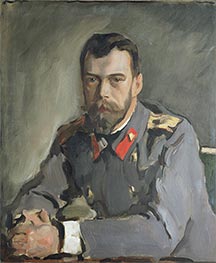
Giclée Canvas Print
$76.94
$76.94
SKU: 18134-SVA
Valentin Aleksandrovich Serov
Original Size:71.2 x 59.2 cm
The Tretyakov Gallery, Moscow, Russia
Valentin Aleksandrovich Serov
Original Size:71.2 x 59.2 cm
The Tretyakov Gallery, Moscow, Russia
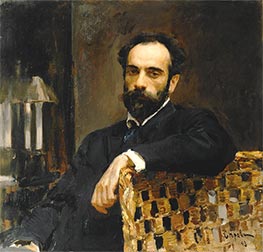
Giclée Canvas Print
$90.29
$90.29
SKU: 18130-SVA
Valentin Aleksandrovich Serov
Original Size:81.7 x 85.4 cm
The Tretyakov Gallery, Moscow, Russia
Valentin Aleksandrovich Serov
Original Size:81.7 x 85.4 cm
The Tretyakov Gallery, Moscow, Russia
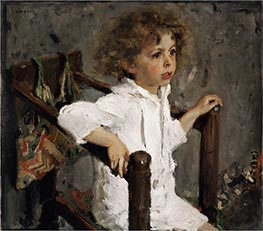
Giclée Canvas Print
$82.59
$82.59
SKU: 3100-SVA
Valentin Aleksandrovich Serov
Original Size:62.3 x 70.6 cm
The Tretyakov Gallery, Moscow, Russia
Valentin Aleksandrovich Serov
Original Size:62.3 x 70.6 cm
The Tretyakov Gallery, Moscow, Russia
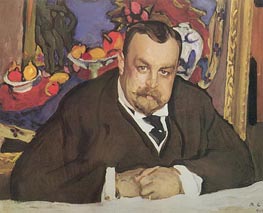
Giclée Canvas Print
$72.33
$72.33
SKU: 3099-SVA
Valentin Aleksandrovich Serov
Original Size:63 x 77 cm
The Tretyakov Gallery, Moscow, Russia
Valentin Aleksandrovich Serov
Original Size:63 x 77 cm
The Tretyakov Gallery, Moscow, Russia
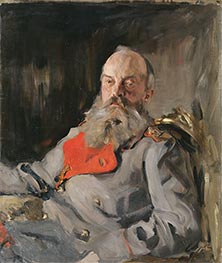
Giclée Canvas Print
$79.17
$79.17
SKU: 18132-SVA
Valentin Aleksandrovich Serov
Original Size:89.5 x 75 cm
The Tretyakov Gallery, Moscow, Russia
Valentin Aleksandrovich Serov
Original Size:89.5 x 75 cm
The Tretyakov Gallery, Moscow, Russia
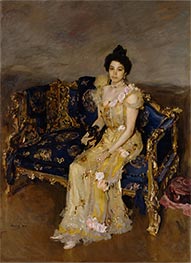
Giclée Canvas Print
$68.40
$68.40
SKU: 3101-SVA
Valentin Aleksandrovich Serov
Original Size:189 x 139.5 cm
State Russian Museum, St. Petersburg, Russia
Valentin Aleksandrovich Serov
Original Size:189 x 139.5 cm
State Russian Museum, St. Petersburg, Russia
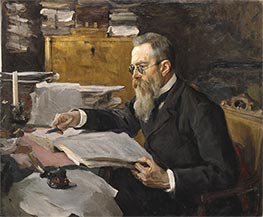
Giclée Canvas Print
$77.29
$77.29
SKU: 18133-SVA
Valentin Aleksandrovich Serov
Original Size:96.5 x 113.2 cm
The Tretyakov Gallery, Moscow, Russia
Valentin Aleksandrovich Serov
Original Size:96.5 x 113.2 cm
The Tretyakov Gallery, Moscow, Russia
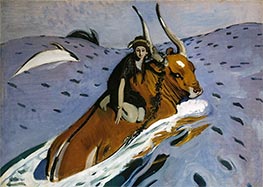
Giclée Canvas Print
$66.85
$66.85
SKU: 18126-SVA
Valentin Aleksandrovich Serov
Original Size:71 x 98 cm
The Tretyakov Gallery, Moscow, Russia
Valentin Aleksandrovich Serov
Original Size:71 x 98 cm
The Tretyakov Gallery, Moscow, Russia
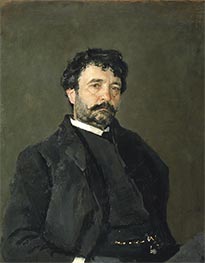
Giclée Canvas Print
$73.35
$73.35
SKU: 18131-SVA
Valentin Aleksandrovich Serov
Original Size:89.5 x 70.8 cm
The Tretyakov Gallery, Moscow, Russia
Valentin Aleksandrovich Serov
Original Size:89.5 x 70.8 cm
The Tretyakov Gallery, Moscow, Russia
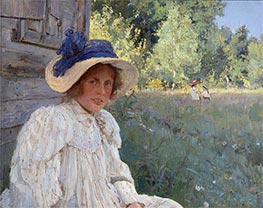
Giclée Canvas Print
$74.21
$74.21
SKU: 3108-SVA
Valentin Aleksandrovich Serov
Original Size:74 x 94 cm
The Tretyakov Gallery, Moscow, Russia
Valentin Aleksandrovich Serov
Original Size:74 x 94 cm
The Tretyakov Gallery, Moscow, Russia
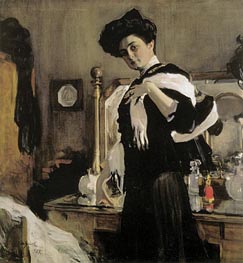
Giclée Canvas Print
$94.04
$94.04
SKU: 3102-SVA
Valentin Aleksandrovich Serov
Original Size:140 x 140 cm
The Tretyakov Gallery, Moscow, Russia
Valentin Aleksandrovich Serov
Original Size:140 x 140 cm
The Tretyakov Gallery, Moscow, Russia
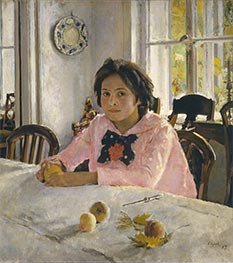
Giclée Canvas Print
$85.84
$85.84
SKU: 3093-SVA
Valentin Aleksandrovich Serov
Original Size:91 x 85 cm
The Tretyakov Gallery, Moscow, Russia
Valentin Aleksandrovich Serov
Original Size:91 x 85 cm
The Tretyakov Gallery, Moscow, Russia
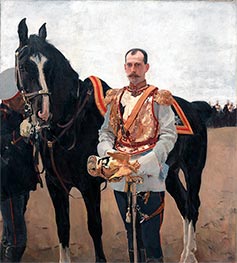
Giclée Canvas Print
$84.63
$84.63
SKU: 3105-SVA
Valentin Aleksandrovich Serov
Original Size:166.7 x 149.5 cm
The Tretyakov Gallery, Moscow, Russia
Valentin Aleksandrovich Serov
Original Size:166.7 x 149.5 cm
The Tretyakov Gallery, Moscow, Russia
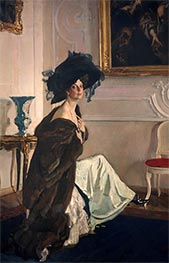
Giclée Canvas Print
$62.58
$62.58
SKU: 3089-SVA
Valentin Aleksandrovich Serov
Original Size:237.5 x 160 cm
State Russian Museum, St. Petersburg, Russia
Valentin Aleksandrovich Serov
Original Size:237.5 x 160 cm
State Russian Museum, St. Petersburg, Russia
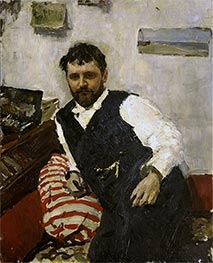
Giclée Canvas Print
$74.04
$74.04
SKU: 3091-SVA
Valentin Aleksandrovich Serov
Original Size:112 x 89.7 cm
The Tretyakov Gallery, Moscow, Russia
Valentin Aleksandrovich Serov
Original Size:112 x 89.7 cm
The Tretyakov Gallery, Moscow, Russia
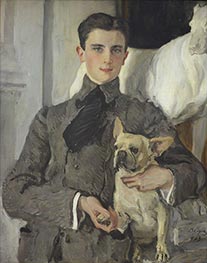
Giclée Canvas Print
$73.87
$73.87
SKU: 3104-SVA
Valentin Aleksandrovich Serov
Original Size:89 x 71.5 cm
State Russian Museum, St. Petersburg, Russia
Valentin Aleksandrovich Serov
Original Size:89 x 71.5 cm
State Russian Museum, St. Petersburg, Russia
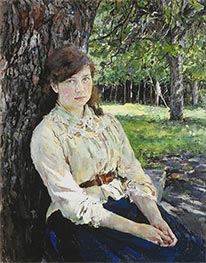
Giclée Canvas Print
$73.69
$73.69
SKU: 3110-SVA
Valentin Aleksandrovich Serov
Original Size:89.2 x 71.3 cm
The Tretyakov Gallery, Moscow, Russia
Valentin Aleksandrovich Serov
Original Size:89.2 x 71.3 cm
The Tretyakov Gallery, Moscow, Russia
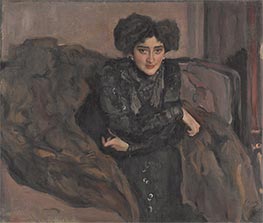
Giclée Canvas Print
$79.51
$79.51
SKU: 18127-SVA
Valentin Aleksandrovich Serov
Original Size:99.5 x 114.8 cm
The Tretyakov Gallery, Moscow, Russia
Valentin Aleksandrovich Serov
Original Size:99.5 x 114.8 cm
The Tretyakov Gallery, Moscow, Russia
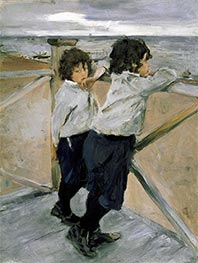
Giclée Canvas Print
$70.62
$70.62
SKU: 18125-SVA
Valentin Aleksandrovich Serov
Original Size:71 x 54 cm
State Russian Museum, St. Petersburg, Russia
Valentin Aleksandrovich Serov
Original Size:71 x 54 cm
State Russian Museum, St. Petersburg, Russia
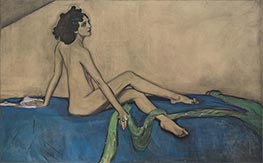
Giclée Canvas Print
$62.05
$62.05
SKU: 3088-SVA
Valentin Aleksandrovich Serov
Original Size:147 x 233 cm
State Russian Museum, St. Petersburg, Russia
Valentin Aleksandrovich Serov
Original Size:147 x 233 cm
State Russian Museum, St. Petersburg, Russia
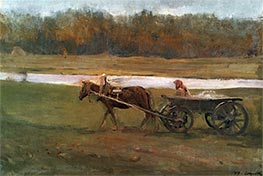
Giclée Canvas Print
$62.75
$62.75
SKU: 3095-SVA
Valentin Aleksandrovich Serov
Original Size:48 x 70 cm
State Russian Museum, St. Petersburg, Russia
Valentin Aleksandrovich Serov
Original Size:48 x 70 cm
State Russian Museum, St. Petersburg, Russia